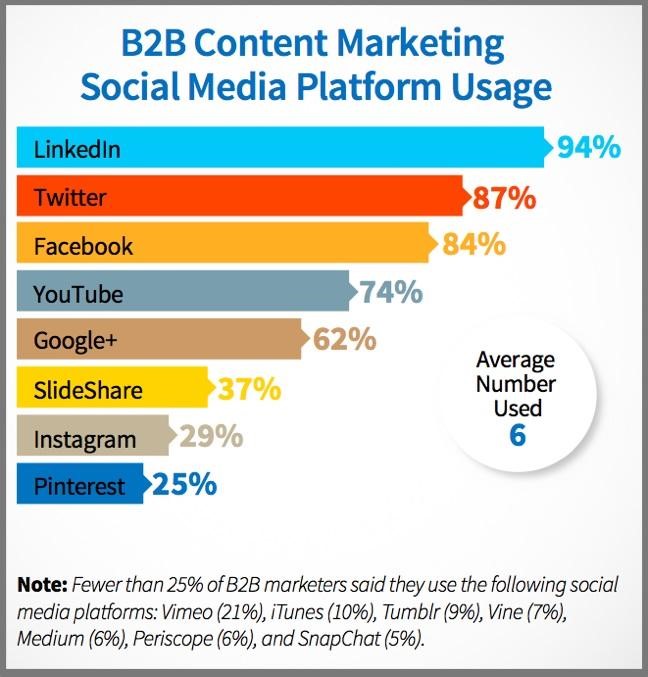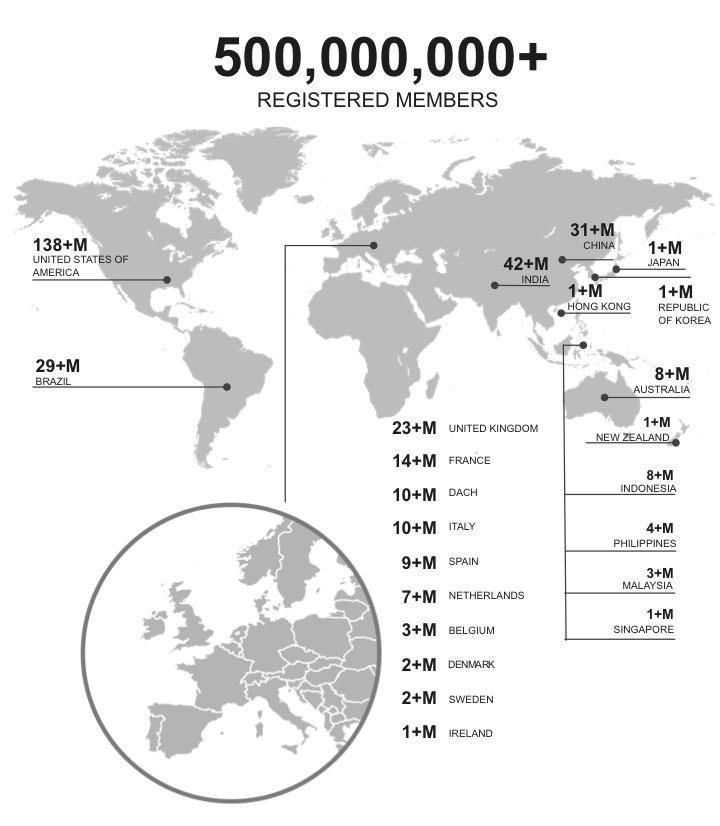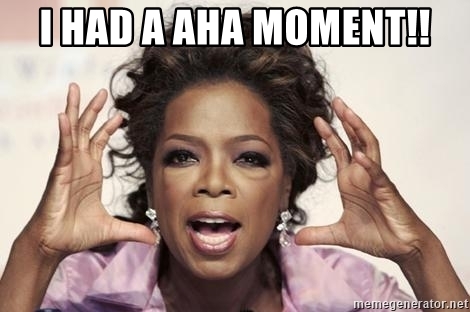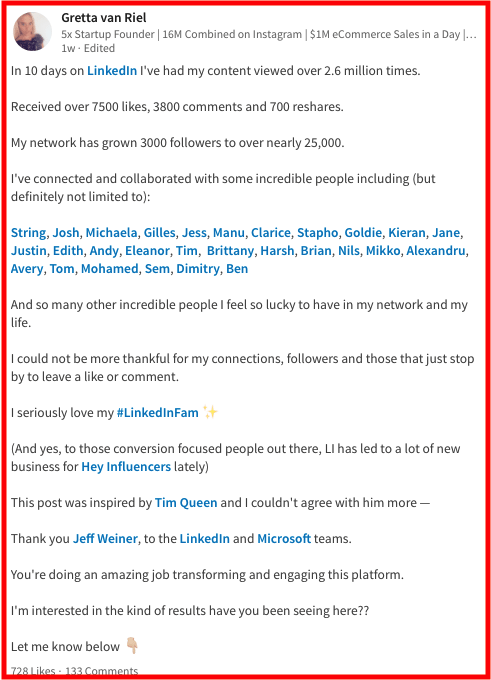LinkedIn, a massive B2B database — who would have thought?
Would you have believed me if I told it to you a couple of years ago that LinkedIn, a professional social media platform, which was once looked down upon would turn into a massive B2B database holder in the future?
LinkedIn is not just a mere social media platform where people go to share the pictures of their cute cats.
It is a large hub where marketers, salespersons, CEOs, job seekers, recruiters, and so forth, come under one roof and connect with each other to build a symbiotic relationship.
Is it hard to digest?
If you can’t believe that LinkedIn has become so essential for professionals, then you are probably living under a rock.
According to statistics, 94% of people use LinkedIn for their B2B content marketing endeavors.
Moreover, it now has over 500 million users. It is also home to more than 9 million business profiles from over 200 countries.
Zip-a-dee-doo-dah!
These are some enthralling stats that prove the fact that LinkedIn cannot be underestimated anymore. And I can cite countless other equally awe-inspiring statistics.
How did LinkedIn reach this zenith?
When did people start seeing it as something more than just a platform to upload their resume and search for jobs?
Today, we will have a quick look at LinkedIn’s journey of how it turned into a massive database holder.
How LinkedIn started — From 0 members to over 500 members
Let’s first have a look at this short LinkedIn timeline:
- 2003: Launch – growth is slow at first—as few as 20 signups on some days
- 2005: LinkedIn introduces its first business lines: Jobs and Subscriptions
- 2006: With the launch of public profiles, LinkedIn begins to stake its claim as the professional profile of record.
- 2008: LinkedIn becomes a truly global company, opening offices worldwide.
- 2009: Jeff Weiner joins LinkedIn
- 2010: Company witnesses hyper-growth! By the end of the year, it has 90M members.
- 2016: Microsoft acquires LinkedIn for $26.2B
- 2018: Has over 500M members and is the biggest B2B database holder on the internet.
Within a few years, LinkedIn has surely become a force to be reckoned with. Most people attribute this success trajectory to Jeff Weiner, LinkedIn’s CEO. After all, ever since he joined the company, it has witnessed massive growth. One can also agree to the point that as the rise of storytelling in marketing began, we began to see the rise in LinkedIn members as well.
So, what was the inspiration behind LinkedIn?
Everything cool is created by inspiration and stealth motivation.
However, according to LinkdIn’s co-founder Konstantin Guericke, LinkedIn wasn’t meant to be cool — it was created to build businesses.
Have a look at what he has to say about the initiation of LinkedIn:
It seems LinkedIn was always created to cater to the professional strata of society.
People use social media platforms like Facebook to tell stories about their social life.
LinkedIn offered professionals a platform to scythe through all this lifestyle crap. Now, even corporates and job seekers have a platform to share their stories.
It appeared as a lone social platform, created solely for professionals.
Do you understand the gist of it?
LinkedIn leveraged exclusivity — which is one of the biggest selling factors today.
All other social media platforms on one side and LinkedIn on the other. Just like all regular cars on one side and Rolls Royce on the other. Each smartphone on one side and Apple on the other.
Are you having your “Aha!” Moment?
It is not a moment that is worthy of having an epiphany though. Because it’s as obvious as it can get. When one says LinkedIn, one immediately thinks of professionalism.
But apart from exclusivity, how else did they attract people to their platform?
Read on to find out some of the strategies LinkedIn used to turn into this massive community today.
How LinkedIn Built a Huge Community?
So, now we know how LinkedIn started.
We also got an idea about what led to its rise — in one word, it’s exclusivity.
But having an exclusive user-base is not nearly enough.
Here are the strategies that LinkedIn espoused in order to turn into a massive B2B database holder:
1. Introduction of Native Ads (Sponsored Updates)
During Mark Zuckerberg’s Congressional testimony, when asked about how do they earn so much despite providing free services, he smirked and answered, “Senator, we run ads.”
And seeing the massive success of social media platforms like Facebook, LinkedIn also announced its Sponsored Updates ad service in July 2013.
LinkedIn Ads allow users to increase their outreach by specifically targeting their audience and sponsor their content and spread it on their timeline (LinkedIn feed).
This further allows people to build connections and network deeper with their niche audience.
2. LinkedIn Groups and Influencers
LinkedIn hit the nail with this one. In 2012, LinkedIn launched the Influencers program. We all know how seriously people take influencers and their given advisories.
LinkedIn presciently observed this trend and invited over 500 professionals to come and post content on LinkedIn. These professionals were given the “LinkedIn Influencer” badge. LinkedIn Influencers include some of the most prolific and stalwart people in their domain of work including Richard Branson, Obama, Bill Gates, and so forth.
Content by LinkedIn influencers started to be shared heavily. And not just that, this sort of content marketing encouraged engagement and compelled people to share, like and comment heavily.
3. LinkedIn – Focus on B2B Engagement
While platforms like Twitter, Pinterest are also good for promoting your business and holding an engagement, LinkedIn scythes through all the frivolous stuff.
In simple words, LinkedIn means business.
LinkedIn is a holy-grail for B2B organizations. It is built solely for business interactions. As a result, they have built a loyal base of users.
People on LinkedIn don’t go to connect with friends and family, they go to LinkedIn to connect with potential leads, collaborators, and more. And this is the reason why the B2B content sharing on LinkedIn is increasing tremendously while it is slightly dwindling on other social media platforms.
For instance, as opposed to other social media platforms where people are just looking to pass some time looking at cute photos, on LinkedIn, people are looking to keep up with their industry trends, influencers in their domain, ideas for their business, and so forth.
4. Content-first policy
Since 2015, LinkedIn has projected itself as a content-first social media platform. They integrated their Pulse publishing platform with the main LinkedIn website and now professionals
And this worked wonder for LinkedIn!
According to statistics, more than 1 million members have published content on LinkedIn’s Pulse platform. This led to more and more organic traffic coming their way.
Have a look at how entrepreneur Gretta van Riel talks about her content marketing success on LinkedIn:
Now LinkedIn isn’t mere LinkedIn — today it is known as LinkedIn, a Massive B2B Database holder with more and more professionals flocking to the website in order to gain something or the other.
After the success of LinkedIn Pulse, they launched another successful content sharing option — native LinkedIn video.
Now whichever profile you open, you will see LinkedIn influencers sharing engaging videos and leveraging it to their potential best.
In fact, according to the people who regularly share videos on LinkedIn, videos tend to perform better on LinkedIn than any other social media channel.
LinkedIn’s Business Model
Now, you all are aware of how LinkedIn positioned as a sole platform to help professionals connect with other professionals from all over the world.
We also discussed in brief about a couple of points that made LinkedIn a massive B2B database holder.
Let’s now discuss LinkedIn’s business model in brief.
Before we get started, you should know that LinkedIn follows a multifaceted freemium model.
Multifaceted because of its multi-sided customer segments. For instance, it serves recruiters as well as job seekers at the same time. And freemium because everyone can avail their basic services without spending a single dime.
Let’s elaborate LinkedIn’s multi-sided business model to alleviate your confusion.
Multi-Sided Business Model
It’s pretty obvious — LinkedIn serves various target audience. Yet all of them are dependent on each other.
Therefore, LinkedIn serves all the sides.
For instance, LinkedIn offers paid hiring services to recruiters and other subscription plans to professionals looking for a job on LinkedIn.
All in all, LinkedIn’s multi-sided business model revolves around the following basic pillars:
- Talent Hiring Solutions
- Learning & Development
- Marketing Solutions
Talent Hiring Solutions
LinkedIn offers a couple of tools to make the task of talent acquisition much easier than ever before.
LinkedIn offers a LinkedIn Recruiter package to allow HR managers to acquire the best fit for the position they are looking for. Using this package, they can find, contact and connect with qualified candidates in their domain.
From the Advanced search option to InMail service, recruiters and HR managers can leverage a plant of things offered by LinkedIn Recruiter package.
Learning & Development
In 2015, LinkedIn bought online learning company Lynda for $1.5 billion. This provides millions of subscription members to opt for thousands of professional courses on various subjects like digital marketing, content marketing and so on and so forth.
It is worthy to note that this option is also subscription based as it is not a part of LinkedIn’s freemium model.
Sales & Marketing Solutions
We have discussed some of the marketing solutions of LinkedIn in the above section. Its marketing solutions basically consist of the part where it allows its professional member base to increase their outreach by advertising their products or services.
Marketing solutions by LinkedIn include Sponsored Updates, LinkedIn Ads, Sponsored InMails, and so forth.
Another tool that makes LinkedIn stand out from the legions of countless other social media platforms is its Sales Navigator.
LinkedIn Sales Navigator allows its users to completely automate their sales and lead generation process. Using it, the professionals find it easier to connect with their target audience and build a network on a deeper level.
LinkedIn claims that due to Sales Navigator, users are able to land 35% larger deals and be open to 34% more opportunities for your money.
Also Read: LinkedIn Marketing: 20 Ways To Use LinkedIn To Grow Your Business
The Future
So, now what?
What does the future hold for LinkedIn, a massive B2B database holder?
It’s rise as a massive B2B database holder isn’t dwindling anytime soon. However, it is yet to be seen whether LinkedIn will foray into other domains to help professionals connect and build successful networks.
As the things stand, it is safe to say that 2019 and the upcoming years are going to be amazing for LinkedIn as well as its users. People are increasingly turning to this platform for various business purposes, and rightly so.
If you are on LinkedIn, don’t hesitate to tap into its vast market of videos and content as build your authority while indulging in both.
All in all, it’s a great time to be on LinkedIn!
Do you think it’s okay to name LinkedIn as — LinkedIn, a massive B2B database holder? How is LinkedIn benefiting you and your business?










